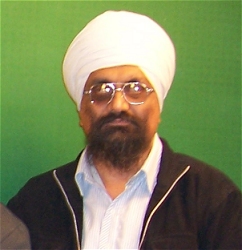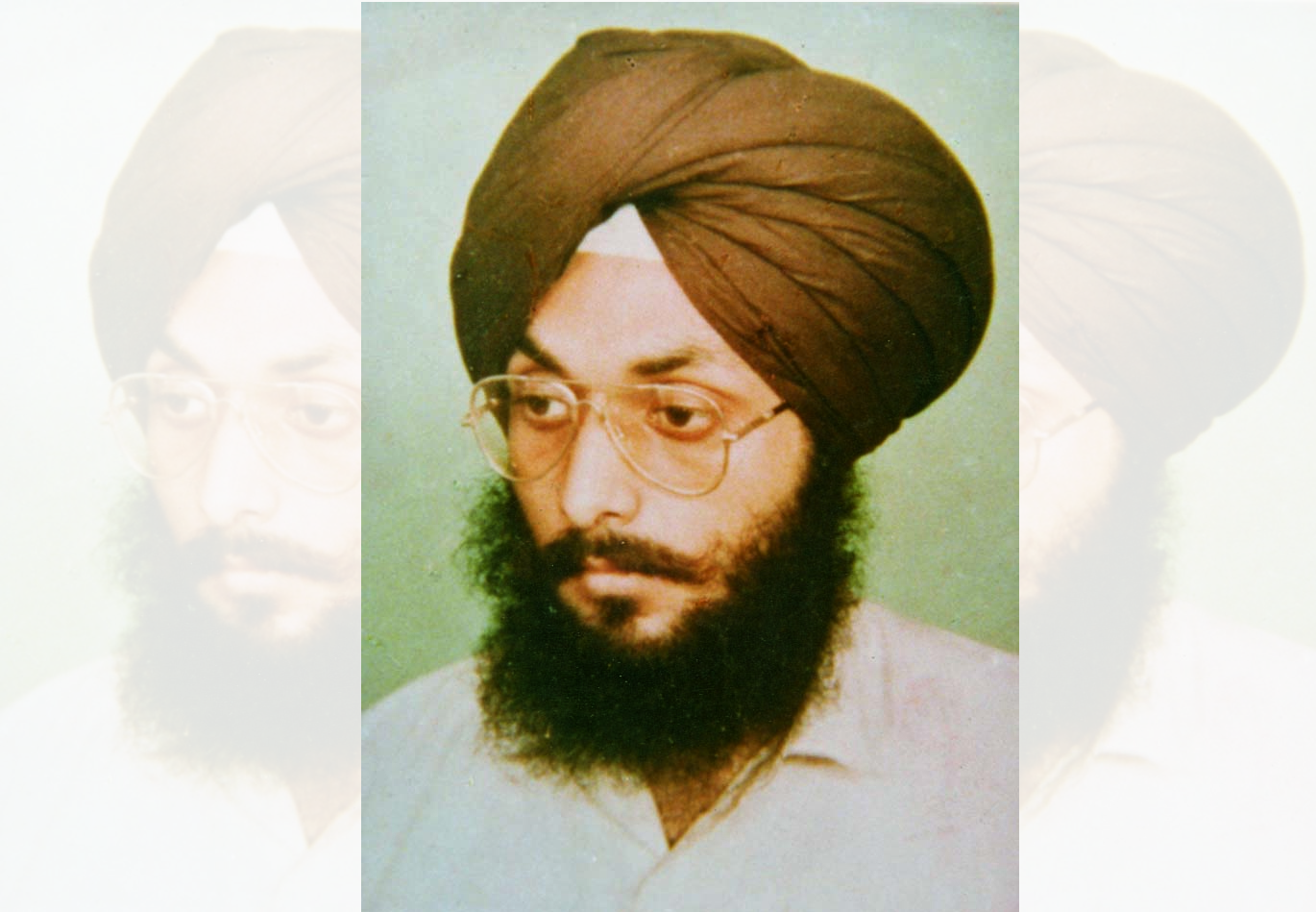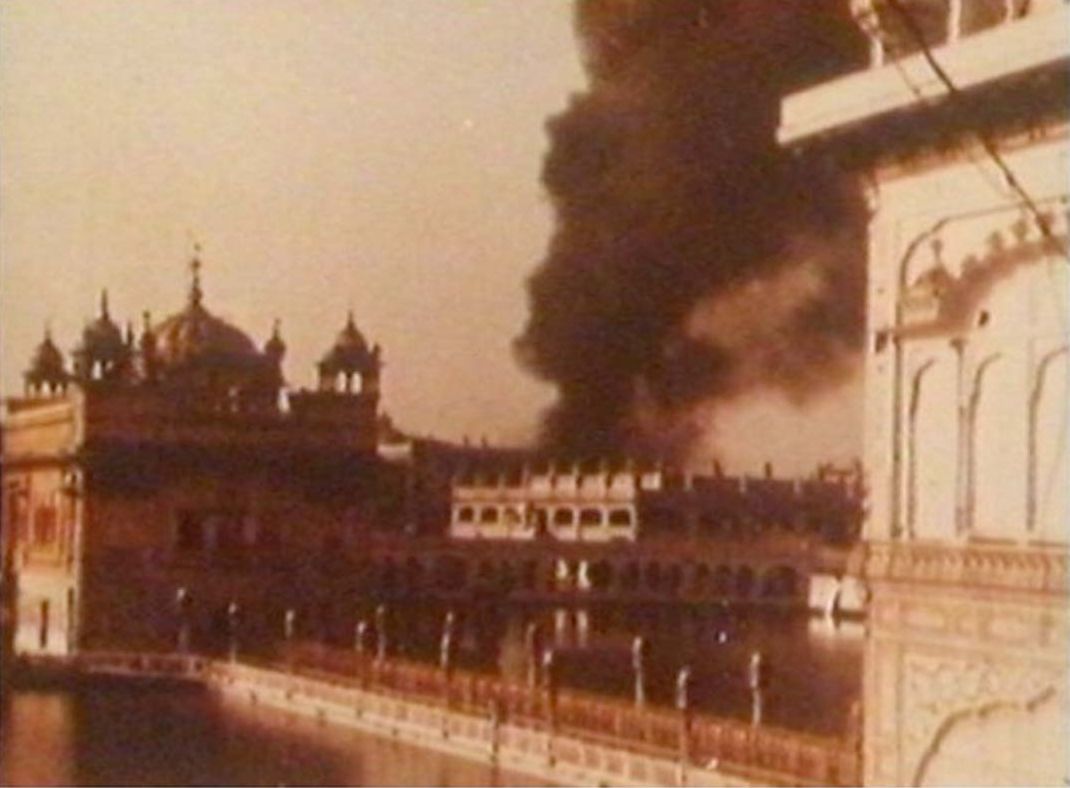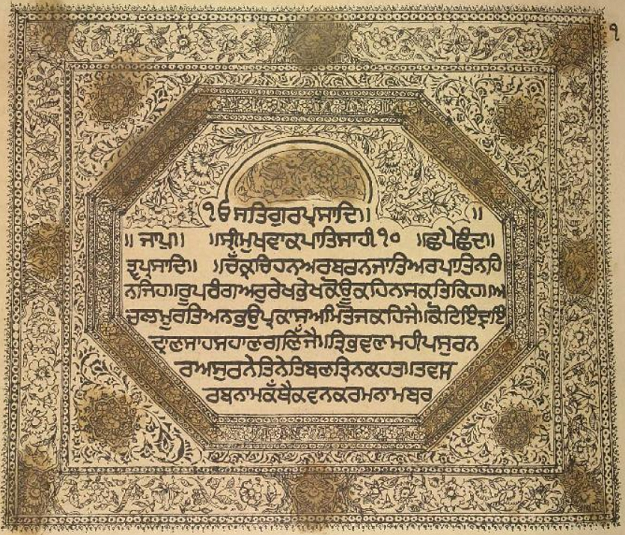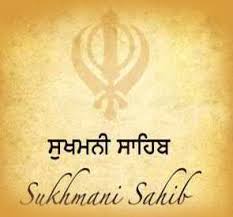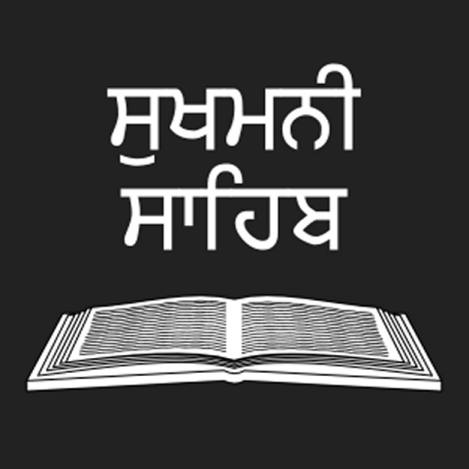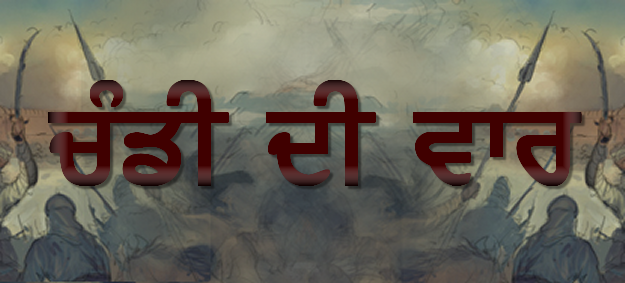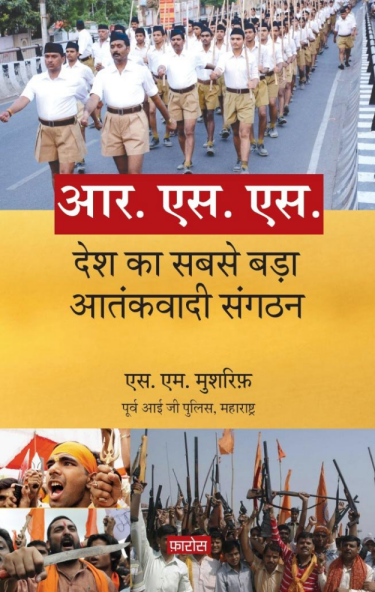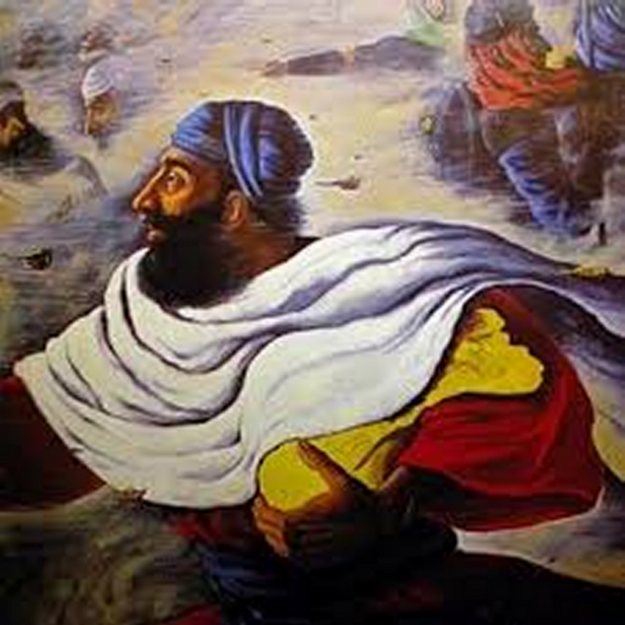
(KP)
In the past few weeks some readers have contacted Panthic Weekly regarding questions and queries they had regarding Gurmat, which had arisen at a Sikh youth camp for students in the UK, which they had attended in their summer vacation. Through the guidance of Gurbaani and Sikh Rehat Maryada the answers to the questions have been provided.
“Is clapping allowed inside Darbaar Sahib, in the presence of Sri Guru Granth Sahib Ji?”
When we clap we are basically saying "this is from us to you, the performer (or whoever)". A Sikh expresses joy or appreciation of someone or something through praising Vaheguru. This is done through the Jaikaara, the Sikh slogan: “Bole So Nihaal, Sat Sri Akaal!” which translates to mean “Whosoever replies to this shall be blessed: “True is the Immortal Lord”” or “Whoever says, “True is the Immortal Lord” shall be blessed”.
When a jaikaara is uttered we are thanking Akaal Purakh, the All Knowing and Bestower of Gifts. Clapping is a sign of 'I agree with what you say'. This requires a two part agreement. Gurbaani on the other hand, does not take advice but only gives. Therefore, clapping inside darbaar sahib or in the Saadh-sangat is manmat, contrary to the Guru’s teachings.
In the Darbaar (court) of the Guru only ‘sach’, truth, is told, whether you like it or not. For Gursikhs, the Guru Darbaar is a place to take lessons from, and not to be on equal status or to agree with. It is a place to learn to be a slave. Therefore it is clear that clapping is not appropriate in these settings. For similar reasons clapping or applaud is prohibited inside a Church or Mosque, instead recognition or praise is expressed through saying “Amen” or “Glory be to God”.
“Are Sikhs allowed to swear? I have seen Sikhs wearing blue Nihang dress and using foul language, is this Sikhi?”
ਸਲੋਕ ਮ: 3 ॥ ਮਨਮੁਖ ਬੋਲਿ ਨ ਜਾਣਨ੍ੀ ਓਨਾ ਅੰਦਰਿ ਕਾਮੁ ਕ੍ਰੋਧੁ ਅਹੰਕਾਰੁ ॥ ਥਾਉ ਕੁਥਾਉ ਨ ਜਾਣਨੀ ਸਦਾ ਚਿਤਵਹਿ ਬਿਕਾਰ ॥ ਦਰਗਹ ਲੇਖਾ ਮੰਗੀਐ ਓਥੈ ਹੋਹਿ ਕੂੜਿਆਰ ॥ ਆਪੇ ਸ੍ਰਿਸਟਿ ਉਪਾਈਅਨੁ ਆਪਿ ਕਰੇ ਬੀਚਾਰੁ ॥ ਨਾਨਕ ਕਿਸ ਨੋ ਆਖੀਐ ਸਭੁ ਵਰਤੈ ਆਪਿ ਸਚਿਆਰੁ ॥1॥
"Salok, Third Mehl: The self-willed manmukhs do not even know how to speak. They are filled with sexual desire, anger and egotism. They do not know the difference between good and bad; they constantly think of corruption. In the Vaheguru's Court, they are called to account, and they are judged to be false. He Himself creates the Universe. He Himself contemplates it. O Nanak, whom should we tell? The True Lord is permeating and pervading all. ||1||" (Saarang, Ang 1248, SGGS)
Gurbaani clearly states that speaking foul language and negatively, will have an effect on the person’s mind and body. When we speak, we let out vibrations. According to the words we speak and the tone we speak we let out negative or positive vibrations. It is a fact that those who swear, use bad language or speak negatively let out negative vibrations in the environment surrounding them. The negativity and anger they speak with effects the tranquillity and harmony of their mind, which then entails negative effects caused on the physical body as a result of stress and tension.
Guru Ji says:
ਸਲੋਕੁ ਮ: 1 ॥
ਨਾਨਕ ਫਿਕੈ ਬੋਲਿਐ ਤਨੁ ਮਨੁ ਫਿਕਾ ਹੋਇ ॥
ਫਿਕੋ ਫਿਕਾ ਸਦੀਐ ਫਿਕੇ ਫਿਕੀ ਸੋਇ ॥
ਫਿਕਾ ਦਰਗਹ ਸਟੀਐ ਮੁਹਿ ਥੁਕਾ ਫਿਕੇ ਪਾਇ ॥
ਫਿਕਾ ਮੂਰਖੁ ਆਖੀਐ ਪਾਣਾ ਲਹੈ ਸਜਾਇ ॥1॥
Shalok, First Mehl:
“O Nanak, speaking ‘fikaa’, insipid words, the body and mind become ‘fikaa’, insipid.
He is called the most insipid of the insipid; the most insipid of the insipid is his reputation.
The insipid person is discarded in the Court of the Lord, and the insipid one's face is spat upon.
The insipid one is called a fool; he is beaten with shoes in punishment. ||1||”
(Aasa, Ang 473, SGGS)
As Sikhs we recognize that we the Jyot of Vaheguru is within us all:
ਸਭ ਮਹਿ ਜੋਤਿ ਜੋਤਿ ਹੈ ਸੋਇ ॥
“Amongst all is the Light-You are that Light.”
(Ang 13, SGGS)
Our aim, as the Sikh’s of the Guru is to become one with Vaheguru, to realise Vaheguru and let go of the “ego” and merge into the gun, qualities, of Vaheguru. Vaheguru speaks sweetly and never speaks harsh, and therefore a Guru Ka Sikh should do the same.
ਮਿਠ ਬੋਲੜਾ ਜੀ ਹਰਿ ਸਜਣੁ ਸੁਆਮੀ ਮੋਰਾ ॥
ਹਉ ਸੰਮਲਿ ਥਕੀ ਜੀ ਓਹੁ ਕਦੇ ਨ ਬੋਲੈ ਕਉਰਾ ॥
“My Dear Lord and Master, my Friend, speaks so sweetly.
I have grown weary of testing Him, but still, He never speaks harshly to me.”
(Soohee, Ang 784, SGGS)
A Sikh should always remain positive and in a feeling of Chardikala, high spirit. Our Guru Sahibaans are the best role models to aspire for. Sri Guru Gobind Singh Ji’s two elder sons were martyred in the battlefield fighting against the Mughal tyranny, and his two younger sons were cold-heartedly bricked alive by the Mughal regime. However, did Guru Ji swear and curse Aurangzeb, the man responsible for the torture and murder of the innocent? Did Guru Gobind Singh Ji get angry and hot-headed? Did the True Master, Guru Gobind Singh Ji speak negative words and let out negative vibrations? Not at all! The Perfect Guru, the tenth body of Guru Nanak, kept in Chardikala and high spirits even though he had lost his home, family, and worldly wealth. Instead of cursing, swearing and getting angry, Guru Ji wrote the ‘Zafarnaama’, literally meaning, the ‘Letter of Victory’. Guru Ji expressed the truth of the situation in the letter and the horrific crimes that Aurangzeb had committed, however the letter had a tone of triumph, truth, and honour. For this reason, when Aurangzeb heard the letter, he died of shock.
ਫਰੀਦਾ ਬੁਰੇ ਦਾ ਭਲਾ ਕਰਿ ਗੁਸਾ ਮਨਿ ਨ ਹਢਾਇ ॥ ਦੇਹੀ ਰੋਗੁ ਨ ਲਗਈ ਪਲੈ ਸਭੁ ਕਿਛੁ ਪਾਇ ॥78॥
"Fareed, answer evil with goodness; do not fill your mind with anger. Your body shall not suffer from any disease, and you shall obtain everything. ||78||"
(Ang 1381, SGGS)
“I have heard some people say that Vaheguru has one weakness. That one weakness is that he thirsts for people to Love Him. Does Vaheguru have any weaknesses?”
Whoever said this has used their own feelings and emotions and anthropomorphised Vaheguru with their human emotions. It is true that living beings crave love. We should love Vaheguru as he gave us life, air to breathe, food to eat, he cared for us from the day we were conceived in our mother’s womb and will carry on caring for us till we die. Just as a child loves his mother, because of their bond and relationship, a human loves Vaheguru because of their bond, relationship and understanding between the person and Vaheguru.
However, Vaheguru is beyond human characteristics. We anthropomorphise Vaheguru, i.e. perceive Him with human attributes as a mechanism to communicate to Vaheguru and develop a relationship with our limited understanding. Vaheguru is a like deep-ocean, which we cannot put limits to nor estimate. For someone to say “Vaheguru’s one weakness is that he yearns for people to love him” is like the person saying “I know everything about Vaheguru”, and suggests a tone of arrogance and ego.
Gurbaani, the Word of God, revealed for the Guru Sahibaans tells us that Vaheguru is “Pooraa”, perfect. Perfect, means “no weakness”, not even one. If the person who made this comment ever read Rehraas Sahib with close attention, he or she would realise that Vaheguru does not need praise or attention. We are the ones who are helpless without Vaheguru, He is not helpless or needy without us. Vaheguru’s glory and greatness cannot be reduced regardless of whether we praise and love Him less or more.
ਸਾਚੇ ਨਾਮ ਕੀ ਤਿਲੁ ਵਡਿਆਈ ॥
ਆਖਿ ਥਕੇ ਕੀਮਤਿ ਨਹੀ ਪਾਈ ॥
ਜੇ ਸਭਿ ਮਿਲਿ ਕੈ ਆਖਣ ਪਾਹਿ ॥
ਵਡਾ ਨ ਹੋਵੈ ਘਾਟਿ ਨ ਜਾਇ ॥2॥
“Trying to describe even an iota of the Greatness of the True Name,
people have grown weary, but they have not been able to evaluate it.
Even if everyone were to gather together and speak of Him,
He would not become any greater or any lesser. ||2||”
(Sodar, Ang 9, SGGS)
In our daily Nitnem we read in Jaap Sahib the following lines:
ਅਨਾਸ ਹੈਂ ॥ ਉਦਾਸ ਹੈਂ ॥
ਅਧੰਧ ਹੈਂ ॥ ਅਬੰਧ ਹੈਂ ॥136॥
“He is perpetual. He is not entangled in love for anybody.
He is not involved in any entanglements. He is beyond all restraints.”
(P. 18, Dasam Granth)
ਨ ਰਾਗੇ ॥ ਨ ਰੰਗੇ ॥
ਨ ਰੂਪੇ ॥ ਨ ਰੇਖੇ ॥195॥
“Vaheguru is above love. Vaheguru has no colour.
Vaheguru has no form. Vaheguru has no mark.”
(P. 25, Dasam Granth)
Though we should love Vaheguru and He loves all His creation. However, to suggest that He has a weakness or try to play on words to suggest or imply such a thing is an act of ignorance.
“Someone told a friend of mine that it is okay for an Amritdhari to drink sharaab (liquor). However, you shouldn’t drink regularly or get drunk i.e. it is okay for an Amritdhari to drink socially once in a while. This baffled me. I knew it weren’t right but didn’t know enough to explain to my friend what is right.”
Section 4, Chapter X, Article XVI of the Panthic Sikh Rehat Maryada states:
“(j) A Sikh must not take hemp (cannabis), opium, liquor, tobacco, in short any intoxicant. His only routine intake should be food.”
Please refer to Panthic Weekly’s “Understanding the Sikh Rehat Maryada” dated 4th September. That article discusses consuming liquor in regards to Gurmat.
http://panthic.org/news/125/ARTICLE/1730/2005-09-04.html
“Who is a Sikh? I was confused after someone in a lecture implied that anyone and everyone is a Sikh, as long as you feel you are Sikh within. Though it seemed to make sense to an extent, I was unsure in regards to what the person meant in terms of being Keshdhari, and taking Amrit. Does a Sikh have to take Amrit or keep Kesh, or as open-minded caring people should we indiscriminately ‘appreciate’ and ‘rejoice’ the diversity of different types of Sikhs within our community.”
Please refer to an earlier article that issued on Panthic Weekly entitled: “Amrit – is it for everyone?”
http://panthic.org/news/129/ARTICLE/1510/2005-07-10.html
“Why do we beat drums during the Ardaas? Is this only practiced by the warrior Sikhs or by all Sikhs?”
First of all Sikhs who follow the Guru’s path and teachings and have taken the Amrit bequeathed by the Tenth Master, Sri Guru Gobind Singh Ji, are ‘Sant-Sipaahi’, Saint-Warriors. Being a warrior alone is not a Sikh. A Sikh of the Guru is a Spiritual warrior. If you give a weapon in the hand of a non-spiritual person from the road, he or she would use to commit tyranny and harm. However, give the same weapon in the hand of a spiritual person, in the hand of a Saint, and he or she will protect the weak, stand for justice and upkeep righteousness. Therefore, Guru Ji first made a Sikh a “Sant” then a “Sipaahi”. Not the other way round. The sad state of affairs today is that some Sikhs think that they can be ‘warriors’ without being ‘saints’ and they view being ‘saintly’ and being a ‘warrior’ as two separate entities, despite Guru Nanak Sahib Ji making the two the same. Guru Gobind Singh Ji in 1699 brought the message of Guru Nanak into a physical image, and that was the ‘Khalsa’. I thought I would clarify this point.
I think you are referring to the Nihang Singhs when you say “warrior Sikhs”, who are the like the official army of the Panth who are trained and live to fight to guard and protect the Sikh Gurdwaras and the Sikh Community. To read more about Nihang Singhs please visit: http://www.sikhiwiki.org/index.php?title=Nihang
In regards to the drumming during Ardaas, the drum is called the ‘Nagaara’.
Chapter IV – ‘Gurduwaras, congregational etiquette, rites’, article V, of the Panthic Sikh Rehat Maryada states:
“(s) There should be a drum (nagara) in the Gurduwara for beating on appropriate occasions.”
The Nagaara is used to instil high spirits, courage and feeling of strength in the Saadh Sangat. It is also a symbol and sign of royalty. All kings and emperors would have a Nagaara in their court, which would be drummed. For this reason in the court of the King of Kings Sri Guru Granth Sahib Ji there is a Nagara, which is drummed during and at the end of the Ardaas and during Prakaash and Sukhaasan. Practically the Nagaara also plays a function of bringing the congregation to a state of readiness and attention, which is most appropriate for the standing communal Ardaas.
Baba Fareed Ji describes in Gurbaani how the Kings are honoured and respected, but eventually they all die.
ਪਾਸਿ ਦਮਾਮੇ ਛਤੁ ਸਿਰਿ ਭੇਰੀ ਸਡੋ ਰਡ ॥ ਜਾਇ ਸੁਤੇ ਜੀਰਾਣ ਮਹਿ ਥੀਏ ਅਤੀਮਾ ਗਡ ॥45॥
"Drums were beaten in their honour, there were canopies above their heads, and bugles announced their coming. They have gone to sleep in the cemetery, buried like poor orphans. ||45||" (Ang 1380, SGGS)
As Sikhs we are blessed that our King, our Emperor, our Satguru, is eternal and forever with us.
The Maryada, tradition, to play the Nagaara was started by the Sixth Nanak, Sri Guru Hargobind Ji. When Guru Ji moved from one place to another, the Nagaara used to be played. When Bhai Roop Ji went to visit Sri Guru Hargobind Ji to ask for blessings to do Parchaar, to preach, then Guru Ji blessed him with a Nagaara and a flag. This meant that may Bhai Roop Ji do parchaar truthfully and freely.
When commencing the Langar, the Seventh Nanak, Sri Guru Har Rai Ji ordered for the Nagaara to be sounded so that everyone would know that the Langar is ready for the congregation to eat.
Outside the Darbaar (court) of the Eighth Nanak, Guru Har Krishan Ji, a Nagaara used to be sounded. This fact is also recorded:
ਨੌਬਤ ਬਾਜਿਤ ਦਵਾਰ ਅਗਾਰੀ ॥
At Anandpur Sahib, the sound of victory in battle would come from the Naagaras, which would vibrate through the mountains surrounding Anandpur Sahib, raising the hopes of Sikhs and shaking the hearts of the mountains. The Nagaara used for battles were prepared in 1684 at Anandpur Sahib.
Maharaja Ranjit Singh would say “don’t call me Ranjit Singh, I am the ‘Ranjit (battle-victory) Nagaara’ who sends the message of the Kalgidhar (Guru Gobind Singh Ji) to highest of the highest people.
It is important for all Gurdwara Sahibs to have a Nagaara, which should be sounded during early morning Prakaash so that everyone knows that this is the True King’s Court.
Gurmukh Singh can be reached at gurmukh.singh@panthic.org


